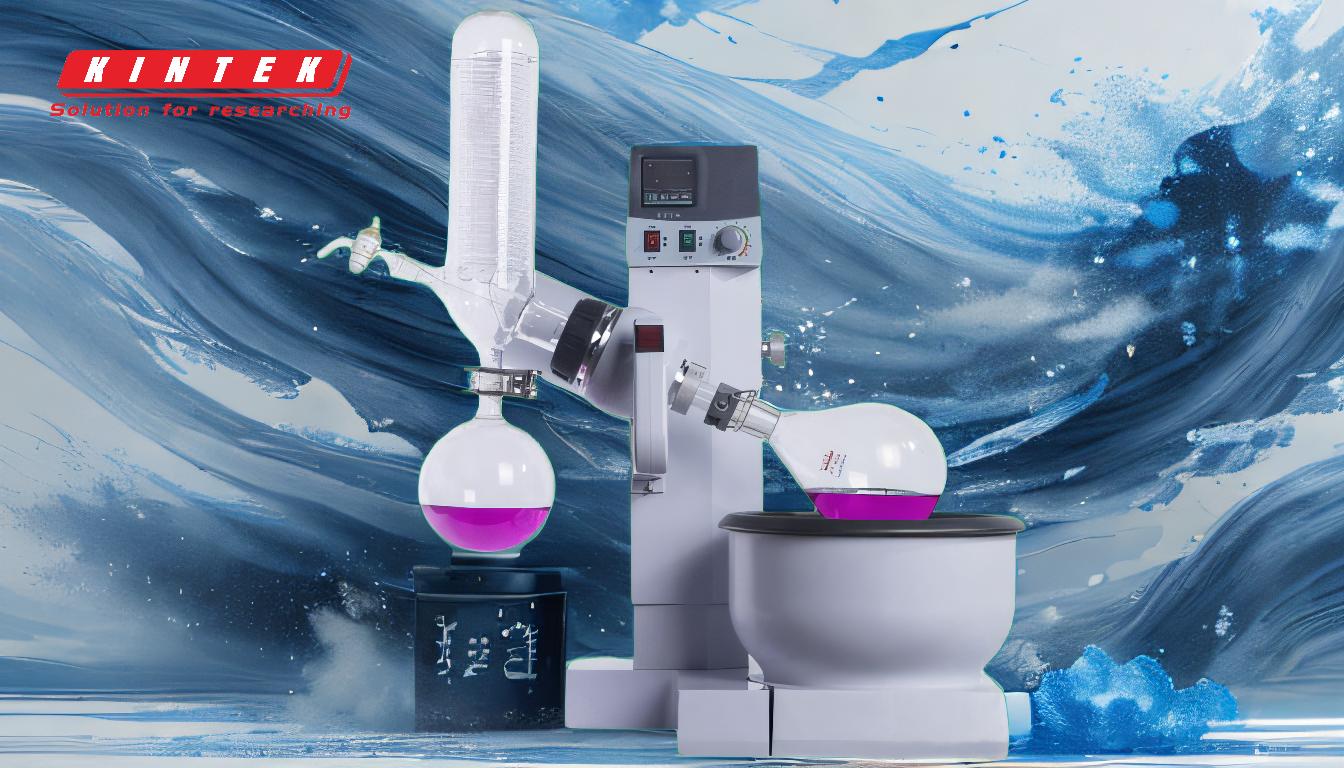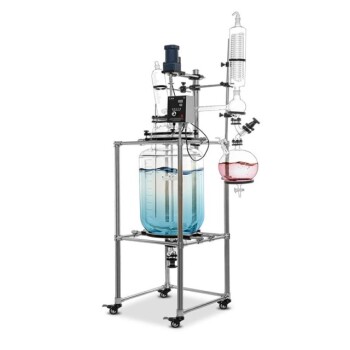Rotary evaporation is a widely used technique in laboratories for the efficient removal of solvents from samples. The process relies on specialized equipment to achieve gentle and controlled evaporation under reduced pressure. A rotary evaporator, or rotovap, is the primary piece of equipment used, and it consists of several key components that work together to facilitate the process. These include a rotating flask, a vacuum system, a heating bath, a condenser, and a collection flask. Each component plays a critical role in ensuring the effective separation of solvents from the sample. Below, the key equipment and their functions are explained in detail.
Key Points Explained:

-
Rotating Flask
- The rotating flask is the container where the sample is placed. It is typically filled to no more than 50% of its capacity to allow for efficient evaporation.
- The flask is attached to a motor that rotates it at a controlled speed, usually between 150-200 rpm. This rotation creates a thin film of the sample along the inner walls of the flask, significantly increasing the surface area for evaporation.
- The increased surface area accelerates the evaporation process, making it more efficient and reducing the risk of overheating the sample.
-
Vacuum System
- A vacuum pump is a critical component that reduces the pressure inside the rotary evaporator. By lowering the pressure, the boiling point of the solvent is also reduced, allowing for evaporation at lower temperatures.
- This is particularly important for heat-sensitive samples, as it minimizes the risk of thermal degradation.
- The vacuum system is connected to the rotary evaporator via hoses and control valves, which allow for precise regulation of the pressure.
-
Heating Bath
- The heating bath, often a water or oil bath, provides controlled heat to the rotating flask. The temperature of the bath is typically set between 30-40°C, depending on the solvent being evaporated.
- The heat helps to bring the solvent close to its boiling point, further enhancing the evaporation process.
- The bath kettle is designed to maintain a stable temperature, ensuring consistent and efficient evaporation throughout the process.
-
Condenser
- The condenser is responsible for cooling the solvent vapors that are generated during evaporation. It typically consists of a cold finger or coil that is cooled to temperatures between -10°C and 0°C.
- As the vapors come into contact with the cold surface of the condenser, they condense back into liquid form.
- The condensed solvent is then collected in a receiving flask, allowing for easy recovery and reuse of the solvent.
-
Collection Flask
- The collection flask, also known as the distillate flask, is where the condensed solvent is collected. It is positioned at the base of the condenser to ensure efficient collection of the liquid.
- This flask is designed to be easily removable, allowing for quick and convenient recovery of the solvent.
-
Additional Accessories
- Hoses and Control Valves: These components connect the various parts of the rotary evaporator and allow for precise control of the vacuum and solvent flow.
- Drain Hose: Used to remove any excess liquid or condensate from the system.
- Collection Bottle: A secondary container that may be used to collect additional distillate or waste.
-
Applications of Rotary Evaporation Equipment
- Rotary evaporators are used in a variety of laboratory applications, including:
- Solvent Removal: Efficiently removing solvents from samples for further analysis or processing.
- Concentration: Reducing the volume of a solution to concentrate the solute.
- Crystallization: Facilitating the formation of crystals by removing excess solvent.
- Drying: Removing residual solvents from solid or semi-solid samples.
- Solvent Recovery: Collecting and reusing solvents, which is both cost-effective and environmentally friendly.
- Rotary evaporators are used in a variety of laboratory applications, including:
-
Operational Considerations
- When using a rotary evaporator, it is important to ensure that the system is properly sealed to maintain the vacuum. Any leaks can significantly reduce the efficiency of the process.
- The rotation speed and temperature must be carefully controlled to prevent bumping (sudden boiling) or overheating of the sample.
- Regular maintenance of the vacuum pump, condenser, and other components is essential to ensure the longevity and reliability of the equipment.
In summary, the rotary evaporator is a versatile and essential piece of laboratory equipment, consisting of several key components that work together to achieve efficient solvent removal. Understanding the role and function of each component is crucial for optimizing the evaporation process and achieving consistent, high-quality results.
Summary Table:
| Component | Function |
|---|---|
| Rotating Flask | Holds the sample, rotates to create a thin film for faster evaporation. |
| Vacuum System | Reduces pressure to lower the solvent's boiling point, enabling gentle evaporation. |
| Heating Bath | Provides controlled heat to the flask for efficient solvent evaporation. |
| Condenser | Cools solvent vapors, converting them back to liquid for collection. |
| Collection Flask | Collects condensed solvent for recovery or disposal. |
| Additional Accessories | Includes hoses, control valves, and drain hoses for precise operation. |
Optimize your lab's solvent removal process with a rotary evaporator—contact us today for expert advice!














